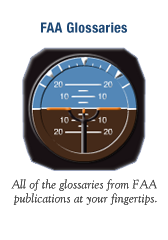Touring Machine Company
Archive for the 'Technique' Category
Notes from Airplane Flying Handbook
Friday, November 1st, 2019I have been referring to FAA-H-8083-3B Airplane Flying Handbook while learning the commercial maneuvers and decided to start reading it from the beginning. As a long-time pilot there is a lot that I already know, but there are some things that deserve a post so that I can remember them. Or they are things I […]
Flying a DME arc
Tuesday, May 7th, 2019Opening and Closing Flight Plans
Tuesday, May 7th, 2019Flight plans can be filed through Leidos at 800-WX-BRIEF or with most EFBs like ForeFlight. They can be filed in the air as well as Jason Miller describes. AIM 5−1−7. Composite Flight Plan (VFR/IFR Flights) a. Flight plans which specify VFR operation for one portion of a flight, and IFR for another portion, will be […]
Replaced a Cylinder.
Sunday, September 24th, 2017We have one cylinder that has always had a lower pressure reading when we checked it at annual. This year it was 35/80 so we pulled it. If you look at the cylinder, it has a ton of corrosion that caused the rings to no longer seal. I suspect the rest of the cylinders are […]
Touch and Goes
Monday, July 31st, 2017In primary training, touch-and-goes do not reflect reality. In the world we are preparing student pilots to enter, airplanes take off, go somewhere (even if it is the pattern) and return to land. The goal of getting a pilot certificate is to be able to travel by air rather than on the ground. Accordingly, for […]
Captain Warren VanderBurgh
Thursday, July 20th, 2017He combines lessons learned from accidents as well as trying things out in the simulator to explain lots of good techniques that apply to GA pilots as well as those flying big jets. Children of the Magenta Line Unusual Attitude Recovery Windshear and Microburst Review CFIT – Advanced Aircraft Maneuvering Program Control Malfunctions & Flight […]
Night Flying
Sunday, April 30th, 2017Here’s an old FAA film about night flying. The film does a good job of covering the risks and rewards of night flight. Except for the outdated “Over” at the end of each transmission and the presence of Flight Service Stations on the airport, everything they say still applies.
Mountain Flying
Sunday, March 5th, 2017While I have flown over the Sierras and Cascades a bunch of times, I have only landed at a few high altitude airports in the summer time. When I took off from Lake Tahoe and Jackson Hole I had an experienced mountain flyer with me and was flying a normally aspirated Cessna 182. We followed […]
Training Videos
Tuesday, January 3rd, 2017The videos from steveo1kinevo are strangely addicting. He does great job of mixing useful tips with his flights. The videos are great for learning how to communicate with ATC—from getting your clearance to taxiing to parking. Along the way he explains why he is doing the things he does. Even though he flies a turbo-prop […]
Reading the POH—Updated Checklists
Wednesday, June 3rd, 2015I recently stumbled upon a conversation about how many times you should cycle the prop when doing your runup. One poster said that since the Pilots Operating Handbook says to do it once, that’s what they are going to do. And in general, following the POH is a good idea. Especially if you have a […]
Landing Technique
Thursday, November 24th, 2011As a rough guide for most Cessna tricycle singles, when you get into ground effect you can enter an attitude with the top of the cowling even with the top of the trees in the distance. This will give you a slight nose-up attitude. Then gradually increase backpressure to keep the cowling in that position […]
Takeoff Technique
Thursday, November 24th, 2011“Far too many pilots begin watching the airspeed indicator, looking for takeoff speed. Bad move, in my opinion. I absolutely do not care what the speed is. My only concern is to allow the airplane to lift off and fly when it wants to. How? In the vast majority of these nosedragger aircraft, if you […]
Pre-takeoff Checklist
Saturday, December 4th, 2010A recent query on the Cessna Pilots Association forum reminded me that I wanted to address the procedures prior to the takeoff. Frank Fisher and Paul Knapp contributed answers similar to my own procedures and I’ve edited them below and interspersed Mike Busch’s thoughts on the mag check. John Godwin at Pilots of America had […]
Maximum Safe Crosswind Velocities
Wednesday, May 12th, 2010A recent FAA email pointed out this interesting fact about what is commonly referred to as “Maximum Demonstrated Crosswind”. From the Airplane Flying Handbook p. 8-17. Maximum Safe Crosswind Velocities Before an airplane is type certificated by the Federal Aviation Administration (FAA), it must be flight tested to meet certain requirements. Among these is the […]
Primary and Supporting Method for IFR – Table
Sunday, June 29th, 2008This is a summary of the information contained in the detailed Primary and Supporting Method for IFR post. Update: 2017-02-18 The FAA has decided that they will no longer ask questions on this method on the Instrument Rating Airplane (IRA) Knowledge Test. Questions in the following topic areas have been deleted: Designation of instruments as […]


